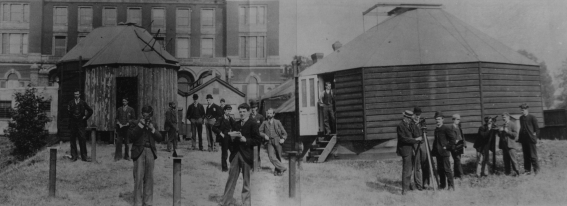Solar Physics Observatory
This was an unusual set-up led by an unusual man, both attracting hostility initially. Its astronomy was to be done in day-time and was astronomical physics (solar physics, even) rather than traditional astronomy. It was also to be publicly-funded, whereas most observatories were in the hands of wealthy amateurs or the ancient universities. Lockyer himself had no academic training, was a journalist (albeit the editor of Nature) and had engineered the beginnings of the SPO from his position within the Devonshire Commission.

Lockyer had been assembling instruments in South Kensington, eventually being granted space by the 1851 Commissioners to erect temporary structures for them in Exhibition Road just over the road from the Normal School of Science. He was appointed Lecturer in Astronomy at NSS, becoming Professor of Astronomical Physics in 1885, and in 1887 was put in charge of the new SPO. Thus there began a period of fruitful collaboration between the two institutions, with SPO researchers, like Lockyer and Fowler, teaching at the School and NSS students, like H.G.Wells, using the Observatory. Research was concerned predominantly with the sun, but progressively included stellar spectroscopy and meteorology.
Aged 65, Lockyer had to retire from his professorship in 1901. In 1906 came the first indications from the 1851 Commissioners that they had other uses in mind for the land occupied by the SPO. The move came in 1912 with most of the staff and instruments going to Cambridge and Lockyer to Sidmouth.
